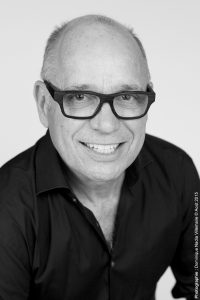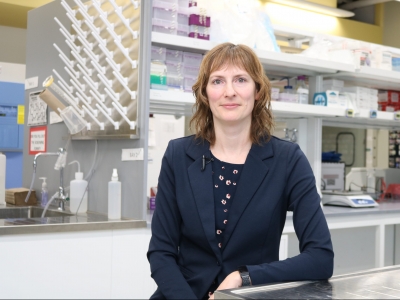 Stephen Field’s office looks exactly like what you would expect an industrial designer’s office to look like. It’s full of odd trinkets with wildly different shapes, made up of different plastics and metals. Even the dustpan looks interesting.
Stephen Field’s office looks exactly like what you would expect an industrial designer’s office to look like. It’s full of odd trinkets with wildly different shapes, made up of different plastics and metals. Even the dustpan looks interesting.
“My office is full of toys,” said Field, as he smiled. “The reason for that is that product design is not just high tech, it can be something as simple as how an object feels in the hand.”
“I like bringing things and changing the office a bit so students can come in and have fun with it.”
This enthusiasm for creating products that are conducive to learning speaks to Field’s enthusiasm for teaching, something he does a lot of as an Assistant Professor in the School of Industrial Design.
Field was also a student and recently completed a Master of Design thesis titled “Sustainability and Self-Reliance: Cooperative Approaches in the Design and Development of Housing Components within Inuit Communities”.
“I am an experienced industrial designer, and when I came into the school and started teaching I got very interested in Inuit studies,” said Field regarding his motivation to undertake that area of research.
“I had an opportunity to go to Uganda, and in Uganda myself, Associated Professor Bjarki Hallgrimsson and several fourth year students were doing design work for people with disabilities. Then I realized that I could utilize my expertise and knowledge in my own country,” said Field.
This past expertise focuses on fenestration products (windows and doors) and the development of a variety of window systems and product design. It also looks at the manufacturing processes to produce these products.
“My thesis was basically on self-sufficiency and sustainability – so developing housing components and systems for the Inuit that they can actually manufacture, maintain and produce themselves,” said Field.
“I’m really looking at the whole culture, the traditional needs, values and distribution and the cost of production and social structure and all of these things, but as a product designer actually trying to design products that meet the northern peoples’ needs and allow them to be more self-sufficient through community manufacturing and assembly”
Field started the Master of Design program as a mature student, having completed his previous education in 1985 and working as a practicing industrial designer with his own firm. When Field sold his firm, he was asked to come back to Carleton as an instructor.
“I like teaching. I like the studio environment and working with students. I like being the coordinator of helping students move forward and do incredible projects. And that’s what we’re currently doing in fourth year, we’re doing a number of projects that are focused on sustainability,” said Field.
Field said that he grew tremendously from the experience in the Master of Design program which helped him gain insights that he never knew he needed.
“Those first few courses are very difficult because you’re not just learning the subject matter, you are learning the whole new structure of the university. It takes time, and you might as well do that work beforehand,” said Field regarding the mature student experience.
Field believes that for mature students to be successful they need to evaluate their writing, get up to date with new technologies and to put a lot of thought into their letter of intent.
“By doing that it focuses your attention and your subject matter and what’s driving you to go ahead and do this,” explained Field.
Right now, Field is looking forward to more research opportunities in the future.
“After all of the teaching and research I’m still passionate about design. I love design, I really love it. I love the process”, said Field.
“And what I’m seeing in the schools and what is coming, designer thinking is growing and it is amazing.”
Thursday, June 15, 2017 in News, Research
Share: Twitter, Facebook



